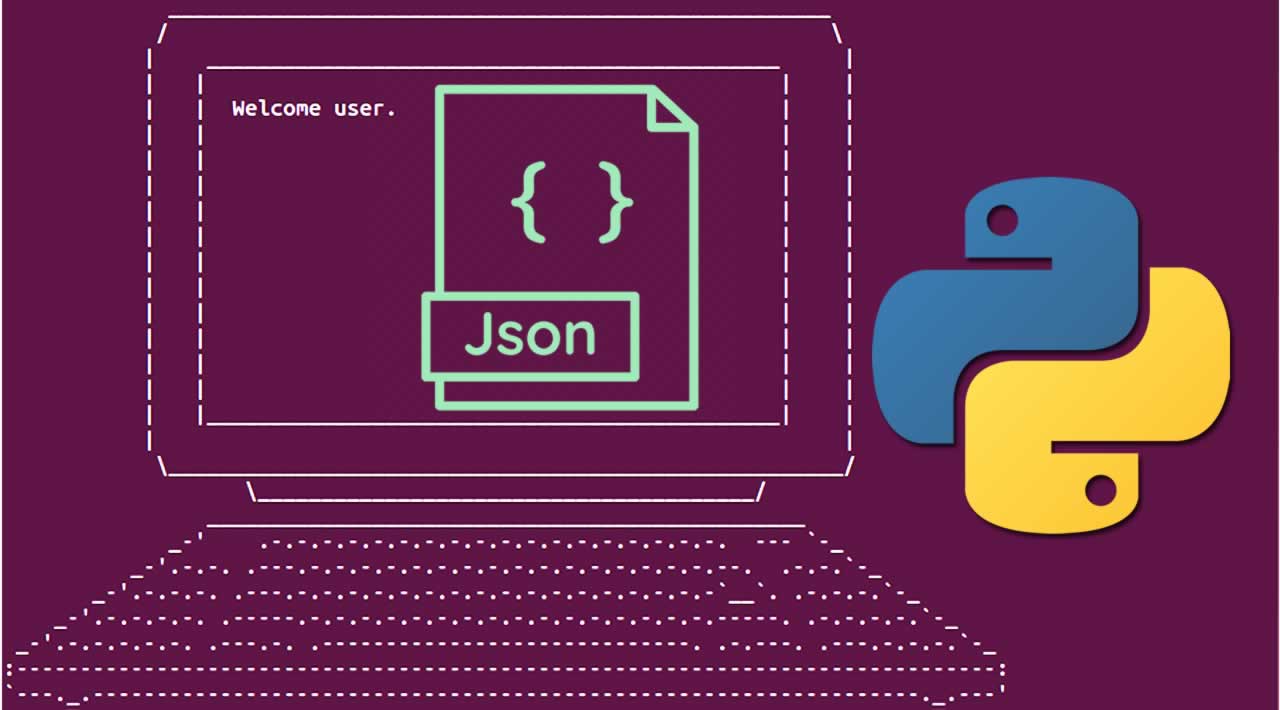How to Read JSON file in Python
Writing JSON to a File
The easiest way to write your data in the JSON format to a file using Python is to use store your data in a dict object, which can contain other nested dicts, arrays, booleans, or other primitive types like integers and strings. You can find a more detailed list of data types supported here.
The built-in json package has the magic code that transforms your Python dict object in to the serialized JSON string.
import json
data = {}
data['people'] = []
data['people'].append({
'name': 'Scott',
'website': 'stackabuse.com',
'from': 'Nebraska'
})
data['people'].append({
'name': 'Larry',
'website': 'google.com',
'from': 'Michigan'
})
data['people'].append({
'name': 'Tim',
'website': 'apple.com',
'from': 'Alabama'
})
with open('data.txt', 'w') as outfile:
json.dump(data, outfile)
After importing the json library, we construct some simple data to write to our file. The important part comes at the end when we use the with statement to open our destination file, then use json.dump to write the data object to the outfile file.
Any file-like object can be passed to the second argument, even if it isn’t an actual file. A good example of this would be a socket, which can be opened, closed, and written to much like a file. With JSON being popular throughout the web, this is another use-case you may encounter.
A slight variation on the json.dump method that’s worth mentioning is json.dumps, which returns the actual JSON string instead of sending it directly to a writable object. This can give you some more control if you need to make some changes to the JSON string (like encrypting it, for example).
Reading JSON from a File
On the other end, reading JSON data from a file is just as easy as writing it to a file. Using the same json package again, we can extract and parse the JSON string directly from a file object. In the following example, we do just that and then print out the data we got:
import json
with open('data.txt') as json_file:
data = json.load(json_file)
for p in data['people']:
print('Name: ' + p['name'])
print('Website: ' + p['website'])
print('From: ' + p['from'])
print('')
json.load is the important method to note here. It reads the string from the file, parses the JSON data, populates a Python dict with the data and returns it back to you.
Just like json.dump, json.load has an alternative method that lets you deal with strings directly since many times you probably won’t have a file-like object that contains your JSON. As you probably guessed, this method is json.loads. Consider the case where you’re calling a REST GET endpoint that returns JSON. This data comes to you as a string, which you can then pass to json.loads directly instead.
Options
When serializing your data to JSON with Python, the result will be in the standard format and not very readable since whitespace is eliminated. While this is the ideal behavior for most cases, sometimes you may need to make small changes, like adding whitespace to make it human readable. Both json.dump and json.load provide quite a few options for more flexibility, a few of which will be described here.
Pretty-Printing
Making JSON human readable (aka “pretty printing”) is as easy as passing an integer value for the indent parameter:
>>> import json
>>> data = {'people':[{'name': 'Scott', 'website': 'stackabuse.com', 'from': 'Nebraska'}]}
>>> json.dumps(data, indent=4)
{
"people": [
{
"website": "stackabuse.com",
"from": "Nebraska",
"name": "Scott"
}
]
}
This is actually quite useful since you’ll often have to read JSON data during development. Another option is to use the command line tool, json.tool. So if you just want to pretty-print JSON to the command line you can do something like this:
$ echo '{"people":[{"name":"Scott", "website":"stackabuse.com", "from":"Nebraska"}]}' | python -m json.tool
{
"people": [
{
"name": "Scott",
"website": "stackabuse.com"
"from": "Nebraska",
}
]
}
Sorting
So the standard is saying that key order isn’t guaranteed, but it’s possible that you may need it for your own purposes internally. To achieve ordering, you can pass True to the sort_keys option when using json.dump or json.dumps.
>>> import json
>>> data = {'people':[{'name': 'Scott', 'website': 'stackabuse.com', 'from': 'Nebraska'}]}
>>> json.dumps(data, sort_keys=True, indent=4)
{
"people": [
{
"from": "Nebraska",
"name": "Scott",
"website": "stackabuse.com"
}
]
}
ASCII Text
By default, json.dump will ensure that all of your text in the given Python dictionary are ASCII-encoded. If non-ASCII characters are present, then they’re automatically escaped, as shown in the following example:
>>> import json
>>> data = {'item': 'Beer', 'cost':'£4.00'}
>>> jstr = json.dumps(data, indent=4)
>>> print(jstr)
{
"item": "Beer",
"cost": "\u00a34.00"
}
This isn’t always acceptable, and in many cases you may want to keep your Unicode characters un-touched. To do this, set the ensure_ascii option to False.
>>> jstr = json.dumps(data, ensure_ascii=False, indent=4)
>>> print(jstr)
{
"item": "Beer",
"cost": "£4.00"
}
Conclusion
In this article we introduced you to the json.dump, json.dumps, json.load, and json.loads methods, which help in serializing and deserializing JSON strings.
What are some of your common use-cases for storing JSON data? Data persistence, configuration, or something else? Let us know in the comments!
Thank you!
#python #json
